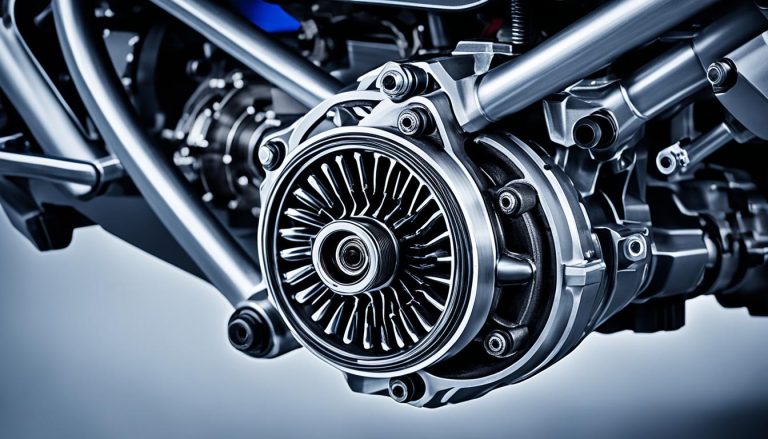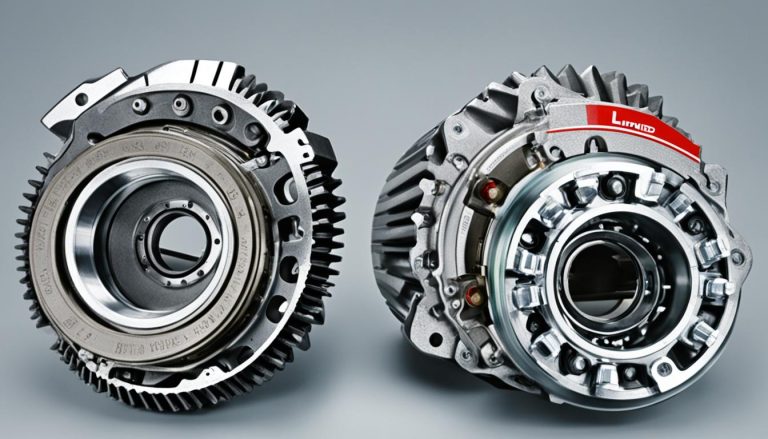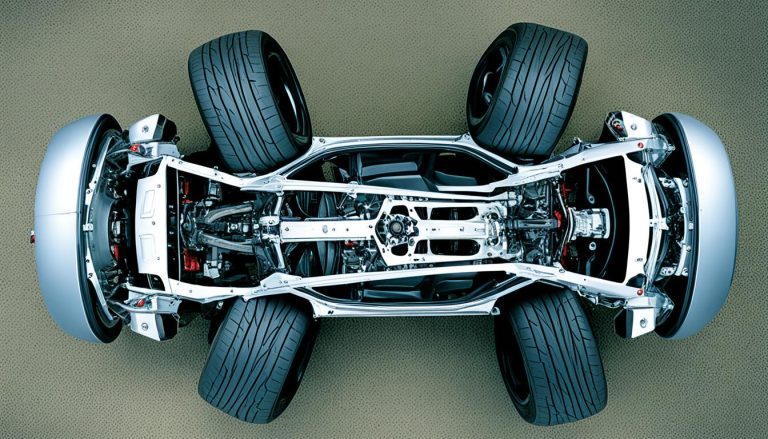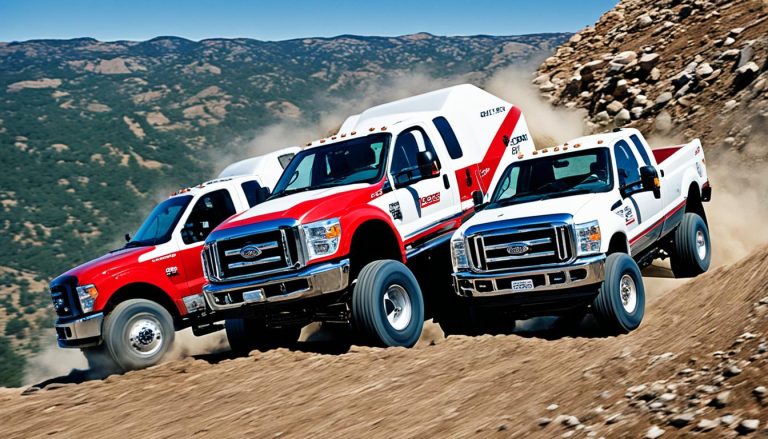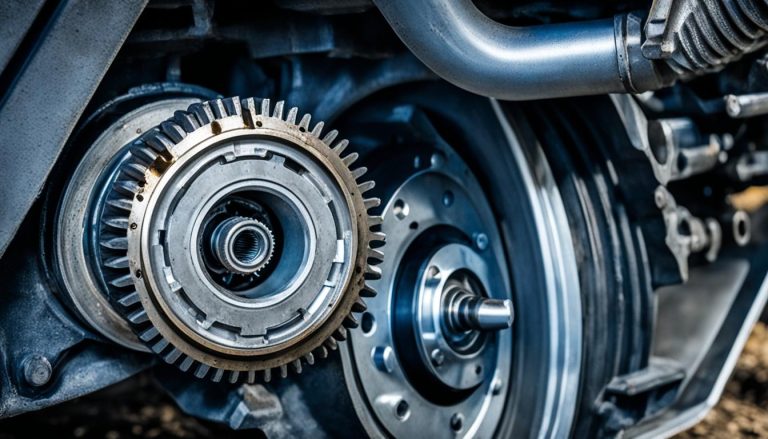Unlock Traction: How Does a Limited Slip Rear Work
Imagine driving through a treacherous patch of ice or powering through a muddy backroad. Your vehicle’s tenacity in these moments hinges on a pivotal component you might not even be aware of: the limited slip differential. In essence, the LSD operation is what determines whether you glide through obstacles or succumb to them. It achieves this by smart torque distribution in limited slip differentials, ensuring that one tire doesn’t spin uselessly while its partner on the same axle remains static.
This traction-optimizing hero doesn’t just reserve its talents for extreme conditions. You’ll be surprised how a limited slip rear can refine your daily drive. Whether you’re merging onto a busy thoroughfare on a rainy day or navigating a sharp curve, the LSD benefits your control and safety. It’s the silent guardian that complements your vehicle’s traction control, making every journey a testament to seamless power delivery and steadfast stability.
Key Takeaways
- A limited slip differential (LSD) is essential for maintaining traction in low-grip conditions.
- LSD operation involves balancing torque distribution to prevent unnecessary wheel spin.
- Enhancements from LSD technology are not limited to performance vehicles; they benefit daily driving scenarios as well.
- Traction control in limited slip rear aligns with your vehicle systems for optimized grip and performance.
- The benefits of LSD include improved stability, control, and safety across various driving conditions.
- Understanding the mechanics of your vehicle’s LSD can help you make the most of its capabilities.
Fundamentals of Limited Slip Differentials (LSD)
When you’re tackling sharp turns or navigating challenging surfaces, the mechanism making your smooth ride possible is the limited slip differential (LSD). A marvel of automotive ingenuity, LSD is crucial in optimizing your vehicle’s performance where it matters most.
Defining the Limited Slip Differential
So, how does a limited slip rear work? In essence, it’s a type of differential that’s engineered to reduce the difference in rotational speed between the two wheels on the same axle. Should one tire lose grip, the LSD intervenes, smartly redirecting torque to the wheel with traction. Whether it’s a sharp corner or a slick patch of ice, an LSD enhances control and stability.
History and Evolution of LSD Technology
Tracing its roots to the 1935 Grand Prix racing cars, the technology behind the LSD is not a new concept. It has, however, continuously evolved with implementations of viscous, mechanical, hydraulic, and electronic systems to meet the demands of modern driving. Each type of LSD harnesses the core idea: to intelligently distribute torque—maintaining a vehicle’s poise even under duress.
Understanding Torque Distribution in LSDs
The secret to LSD’s prowess lies in its ability to ensure torque distribution is finely balanced between the wheels. On turning, the outer wheels travel a greater distance compared to the inner wheels—a scenario where the LSD shines by delivering additional torque to the outer wheel, thereby enhancing grip and control. This level of intelligent torque adjustment is one of the key LSD benefits, making it indispensable in high-performance settings.
Experience heightened driving pleasure and confidence with an LSD equipped ride. Say goodbye to frustrating wheel spin and embrace the seamless acceleration and unbeatable cornering performance that comes with advanced LSD technology.
How Does a Limited Slip Rear Work
Understanding the working principles of a limited slip differential (LSD) can profoundly influence your driving experience, offering substantial LSD performance enhancements. Whether you’re a seasoned performance driver or someone who enjoys the occasional spirited drive, grasping the nuance between mechanical vs electronic LSD and their interaction with open differentials is essential. Let’s delve into the mechanics and electronics that help your vehicle maintain optimal traction.
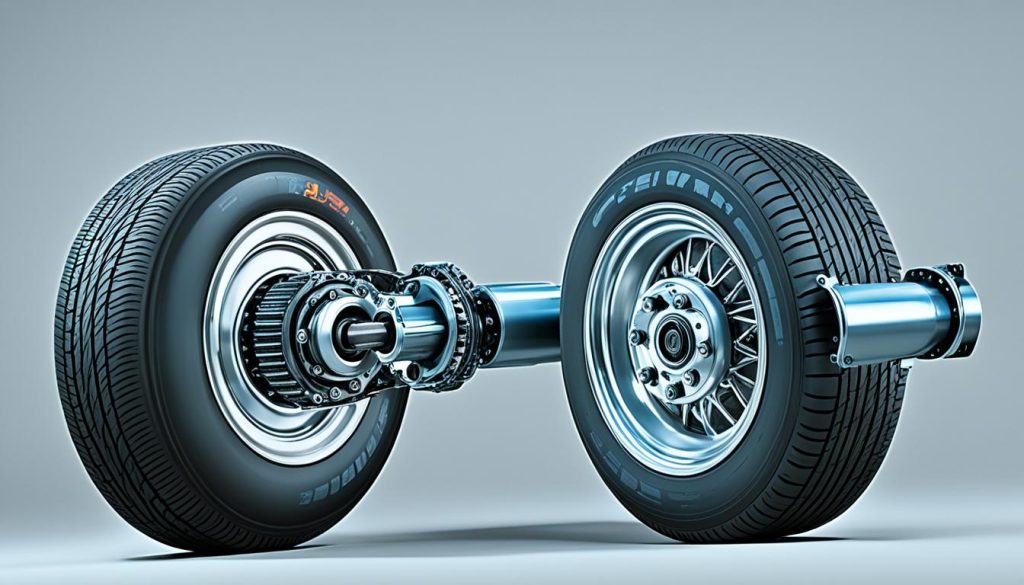
Operation Principles of LSD
At its core, the LSD operation is about intelligently sensing and responding to wheel slip. During a scenario where one wheel loses grip, the LSD intervenes to redistribute torque to the wheel with more traction. This is achieved through a series of clutches or gears, depending on the type of LSD, working in harmony with your vehicle’s drive system to enhance control and stability.
Types of LSD: Mechanical vs Electronic
When comparing the mechanical vs electronic LSD, each has their unique advantages. Mechanical LSDs, for instance, use clutch packs or helical gears to manage slip resistance—this mechanical solution is known for its durability and straightforward operation. On the flip side, electronic LSDs utilize advanced technology, employing sensors and actuators to offer a more refined control by electronically adjusting torque distribution in real-time.
Comparison with Open Differentials
The principal distinction between open differentials and LSDs lies in their approach to handling torque. Open differentials permit different wheel speeds on the same axle but offer no slip limitation—this can result in uncontrolled wheel spin, especially in low-traction conditions. By contrast, LSDs proactively manage the power sent to each wheel, actively enhancing traction to maintain a balanced and potent performance, regardless of the driving environment.
In summary, whether you opt for a mechanical setup or an electronic system, understanding LSDs is about appreciating their role in improving the harmony between your vehicle’s power and the road’s unpredictable conditions. It’s the difference between a good drive and a great one, infused with added confidence from advanced technology you can rely on.
LSD Performance Enhancements on the Road
For automotive enthusiasts seeking superior drive quality and handling, the introduction of a Limited Slip Differential (LSD) can markedly elevate the performance of high-power vehicles. With an enhanced design focused on vehicle control and stability, LSDs play a pivotal role in optimizing your driving experience, whether you’re carving corners on winding mountain roads or pioneering trails in the backcountry.
Benefits for High-performance and Off-road Vehicles
High-performance vehicles are engineered for speed and agility, but without the proper traction, these attributes fall short. LSDs tighten the reins on raw power, translating it into controlled propulsion. This ensures that LSD benefits include not only speed but also precision. Off-road adventurers will also appreciate the LSD’s ability to navigate unpredictable terrain while maintaining a formidable grip, allowing for a more gratifying and safer adventure.

How LSD Improves Vehicle Control and Stability
Driving dynamics are significantly sharpened by LSDs, offering a remarkable enhancement in vehicle stability. On slippery or uneven surfaces, the LSD’s capability to distribute torque between wheels prevents loss of control. The result? An uninterrupted, smooth operation that encourages a confident, sporty drive, ensuring that your vehicle responds to your inputs with precision, especially in high-performance vehicles.
Case Studies: LSD in Action
Real-world applications solidify the reputation of LSDs in automotive circles. From the track to the trail, vehicles endowed with this technology demonstrate LSD performance enhancements that testify to their value. Extensive case studies have reported significant improvements in cornering speeds, reduced understeer, and overall better traction, making the case for LSD as more than just a performance part—it’s a transformative element in vehicle engineering.
Integrating LSD with Vehicle Systems
As innovative automotive technologies continue to evolve, the integration of a limited slip differential (LSD) with advanced vehicle systems such as traction control and electronic stability programs has become a game-changer for vehicle performance and safety. For instance, vehicles in the Jeep JK series benefit from this fusion, creating a synergy between the mechanical prowess of the LSD and the precision of electronic aids. This allows for enhanced traction control in the limited slip rear, delivering a more controlled driving experience, especially in demanding driving scenarios.
Take off-roading adventures as an example, where a vehicle’s ability to navigate over challenging terrains is crucial. Here, LSD integration plays a pivotal role in ensuring the vehicle system enhancement is at its peak performance. This ensures maximum momentum and minimal wheel spin, embodying the true mechanical LSD benefits when you encounter unpredictable paths.
Automakers design these systems with the end-user in mind, ensuring smooth and non-intrusive operation. You’ll find that the vehicle’s response feels natural, allowing you to focus on the road ahead while the technology works quietly beneath you, bringing you a stable and secure vehicular experience.
Imagine your vehicle adapting to various terrains like water adjusts to the shape of its container – this is the prowess of a well-integrated LSD in modern vehicles.
- Seamless Transition: The transition between the LSD and the vehicle’s traction control or electronic stability program is smooth, preventing any jarring interference with your driving flow.
- Enhanced Grip: Gain traction where it’s needed most, with power being directed to the wheels that can utilize it best, leading to an improved grip on any surface.
- Dynamic Performance: Whether navigating tight turns on asphalt or rocky climbs, LSD equipped systems adapt to enhance your vehicle’s performance contextually.
Overall, the marriage between LSD technology and a vehicle’s existing systems underscores a commitment to driving excellence, marrying the raw mechanical benefits with the refined control of modern electronics. As you steer through life’s journeys, take confidence in the knowledge that your vehicle’s reinforced traction control in the limited slip rear not only maximizes performance but also prioritizes your safety.
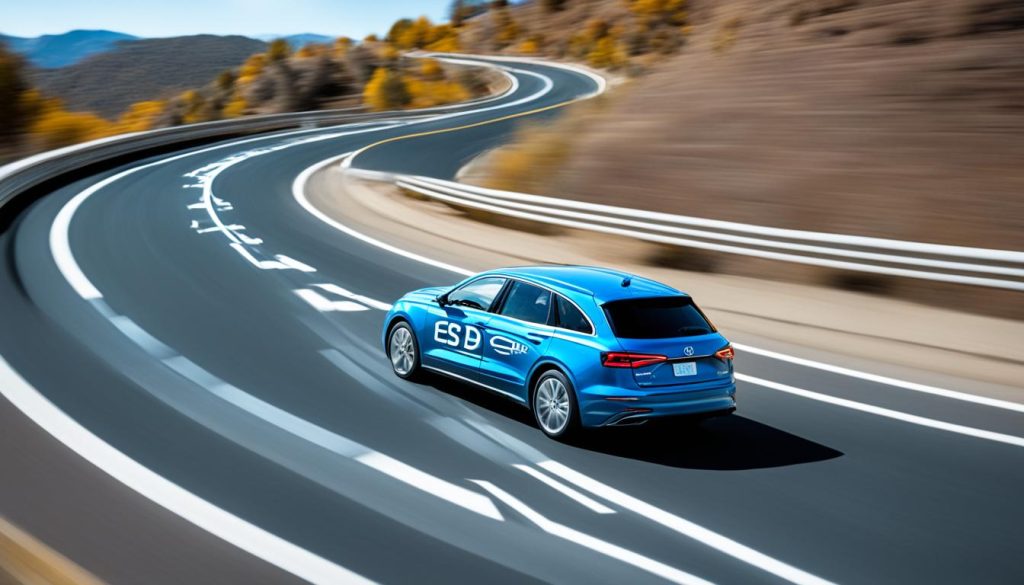
Limited Slip Rear Advantages in Diverse Driving Conditions
When you’re behind the wheel, the safety and performance of your vehicle are paramount, especially in diverse driving conditions. That’s where a limited slip differential (LSD) comes into play, offering tangible LSD advantages that can be a game-changer in ensuring your driving experience is not just safe, but exhilarating. Let’s delve into the specifics of how LSDs improve traction control and enhance vehicle handling, particularly under challenging conditions.

Why Traction Control Matters for Safety
Traction control is more than just a feature; it’s your silent guardian when you’re navigating unpredictable roads. It’s what helps keep your car stable when each wheel is battling different surfaces or weather elements. With an LSD under the hood, traction control is dramatically improved, ensuring that power is efficiently distributed to the wheels with the most grip. This smart technology substantially minimizes the chance of wheel spin and potential loss of control, making it a critical factor for your safety.
LSD Utility in Wet, Snowy, and Icy Conditions
Whether it’s a sudden downpour, an unexpected snowfall, or treacherous icy patches, roads can quickly become a driver’s nightmare. Here, the LSD showcases its merits by adapting torque distribution for optimal traction in wet and snowy conditions. This not only helps in maintaining control but also instills confidence behind the wheel, as you know your vehicle can handle slick and slippery challenges with ease.
Off-roading and Overlanding with LSD-equipped Vehicles
The thrill of off-roading and overlanding is in conquering the unbeaten path, but that requires a vehicle that won’t let you down when the going gets rough. Vehicles equipped with LSD are adept at tackling such adventures, providing massive off-roading benefits. An LSD ensures that if one tire loses contact or traction, the other tire will still receive power, allowing you to continue moving forward, often over obstacles that would stop other vehicles in their tracks.
| Condition | Advantages of LSD | Impact on Driving Experience |
|---|---|---|
| Wet Roads | Reduced hydroplaning risk | More secure and controlled handling |
| Snowy Terrain | Even power distribution to avoid spinning | Consistent forward momentum |
| Icy Patches | Better wheel engagement | Improved grip for safer maneuvering |
| Rugged Off-road | Continuous motion even on uneven ground | Enables exploration of challenging terrains |
As you navigate through varying environments, whether they be urban jungles or natural wilderness, the exceptional abilities of LSDs stand out, offering not just a safety net but a powerful asset that keeps you advancing with confidence. The diverse advantages of LSDs ensure that both your daily commute and your off-road escapades are backed by superior traction control, optimizing every drive, no matter the conditions.
LSD Benefits for Everyday Driving
Have you ever wondered how the technology in your everyday vehicle contributes to a smoother and safer drive? Take LSD benefits, for example—this isn’t just about performance on the racetrack or navigating rocky terrain. Its impact on improved daily driving is substantial, ensuring that your trips to the office or grocery store are as secure and hassle-free as possible.
When conditions are less than ideal, perhaps due to a sudden downpour or early morning frost, limited slip rear advantages ensure that your car maintains optimal road contact by intelligently distributing power across the wheels. This means less wheel spin when you’re accelerating from a stop sign or turning at an intersection. Ain’t technology grand?
But don’t just take our word for it. Let’s lay out some of the facts:
| Driving Scenario | Without LSD | With LSD |
|---|---|---|
| Wet Roads | Potential wheel spin and slide on acceleration | Stable acceleration with controlled power delivery |
| Uneven Surfaces | Risk of losing traction on one side | Even distribution of torque for consistent handling |
| Sharp Corners | Increased stress on tires and potential for skidding | Improved tire longevity and cornering stability |
| Emergency Maneuvers | Higher risk of losing control | Better vehicle response and control during unexpected situations |
For those moments when you’re challenged by the unexpected, the everyday vehicle performance is significantly bolstered with an LSD system. It’s those split-second reactions where enhanced stability can mean the difference between a close call and a call you’d rather not have to make.
“The true measure of technological advancement is how it turns extraordinary capabilities into everyday aids.” — An automotive expert on the role of LSD in modern vehicles.
Now, let’s consider how this feature can be beneficial for your daily driving needs:
- Improved confidence during commuter traffic maneuvers
- Enhanced driving dynamics on your favorite winding road
- Safety-focused handling in adverse weather conditions
Enjoying the drive should always come with the peace of mind that your vehicle can expertly handle the capricious whims of road conditions. With an LSD-equipped car, that’s precisely what you get—an unobtrusive guardian angel optimizing your traction, no matter the scenario.
Choosing the Right LSD for Your Vehicle
When considering how does a limited slip rear work, understanding that it’s all about maintaining optimum traction is key. If you’re currently in the process of choosing an LSD, your driving preferences should be your compass. The right LSD will not only complement your vehicle’s performance but also align with your everyday driving scenarios or adventurous excursions. For enhanced on-road performance, a mechanical LSD could be your go-to for its reliability and maintenance of consistent torque distribution.
For those who frequently face the unpredictable embrace of off-road terrains or inclement weather, a robust LSD that provides an optimal traction solution is not just an enhancement; it’s a necessity. Thereby, your choice might gravitate towards an electronic LSD, replete with the finesse of modern technology and responsive controls that adapt to varying driving conditions. Compatibility with your vehicle’s existing systems is crucial, ensuring that your choice in LSD leads to seamless integration for peak performance.
Ultimately, the investment in a limited slip differential is about matching your vehicle’s capabilities with the adventures you envisage. Whether your aim is vehicle enhancement for daily commutes or preparing for the road less traveled, the proper LSD will rise to meet your expectations, providing the traction and control where it counts. Let your driving preferences guide you, and rest assured that the selection you make today paves the way for a more dynamic and controlled driving experience tomorrow.
FAQ
What exactly is a limited slip differential?
A limited slip differential (LSD) is a type of automotive differential that limits the amount of slip between the wheels on the same axle, ensuring that power is transferred to the wheel with more grip. It provides better traction and control, especially important for performance and off-road vehicles, as well as in low-grip conditions such as in wet or snowy weather.
How has LSD technology evolved over the years?
LSD technology has evolved from its original introduction to Grand Prix racing cars in 1935 to include a variety of systems such as viscous, mechanical, hydraulic, and electronic. These advancements have improved the efficiency of torque distribution between wheels, especially in demanding conditions like high-speed cornering or navigating slippery terrain.
Can you explain how torque is distributed in a LSD?
In a limited slip differential, torque distribution is controlled to minimize wheel slip and enhance traction. Under normal conditions, torque is evenly split between the two wheels on an axle. When one wheel starts to lose grip, the LSD adjusts so that more torque is sent to the wheel with better traction, which helps maintain vehicle stability and control.
How does an LSD function?
An LSD operates by sensing wheel slip, then limiting it to ensure that both drive wheels are engaged, leading to improved traction and control. Mechanical LSDs use mechanical components like gears or clutch packs to manage slip, while electronic LSDs use sensors and actuators for a more sophisticated and precise control.
What are the main differences between mechanical and electronic LSDs?
Mechanical LSDs rely on clutch packs or gears to mechanically distribute torque, and this system is generally simpler and more rugged. Electronic LSDs use digital sensors and electronic controls to adjust torque distribution more precisely in response to changing conditions. Each type has its advantages depending on the application and performance goals.
Why is an LSD advantageous compared to an open differential?
Unlike open differentials, which allow wheels on the same axle to rotate at different speeds without any slip limitation (leading to possible wheel spin), LSDs actively manage wheel spin by allocating torque to the wheel with more grip. This results in better traction and control, and is especially useful in uneven driving conditions or during performance driving.
What benefits do LSDs provide for high-performance and off-road vehicles?
LSDs greatly enhance control during high-speed cornering, reduce tire wear, and improve overall vehicle handling. Off-road vehicles benefit from LSDs as they help maintain traction on challenging terrains, which is critical for climbing slopes or navigating through mud or loose surfaces.
How does incorporating an LSD influence vehicle control and stability?
By minimizing wheel slip and ensuring that power is adequately distributed to the wheels, LSDs improve vehicle control and stability. This is crucial when cornering at high speeds or traveling through uneven terrain, as it enables the driver to maintain their intended path more effectively.
Can you give examples of real-world applications where LSD has improved performance?
Vehicles equipped with LSD technology consistently show better grip and performance in challenging conditions. For instance, performance cars with LSDs experience more controlled launches and high-speed cornering, while off-road vehicles can traverse slippery or inclined surfaces with improved traction and less likelihood of getting stuck.
Does integrating an LSD with other vehicle systems improve performance?
Yes, integrating a limited slip differential with other vehicle systems like traction control and stability programs can significantly enhance vehicle performance. By working in conjunction, these systems can effectively prevent wheel spin, increase stability, and ensure that the vehicle responds appropriately to varying driving conditions.
Why is traction control important for driving safety?
Traction control is essential for safety as it helps prevent the wheels from slipping on slick surfaces, which can lead to a loss of control. An LSD is a key component in traction control systems, actively managing wheel spin and torque distribution to maintain grip and stability.
How does an LSD provide utility in adverse weather conditions?
LSDs excel in wet, snowy, and icy conditions by automatically shifting torque to the wheel with the most grip, which prevents the other wheel from spinning uselessly. This aids in maintaining control and preventing skids or slides that can occur with conventional differentials on slippery surfaces.
What are the advantages of using an LSD-equipped vehicle for off-roading?
For off-roading, an LSD-equipped vehicle can navigate difficult terrains more effectively by ensuring that torque is delivered to the wheels with the most traction, facilitating progress even in situations where one or more wheels may have limited or no contact with the ground.
Are there everyday driving benefits of LSDs outside of performance environments?
Absolutely! Even in everyday driving scenarios, an LSD can enhance stability and control when accelerating out of a corner or on slippery roads. This can result in a safer and more predictable driving experience for daily commutes or running errands.
How should I choose the right LSD for my vehicle?
When selecting an LSD for your vehicle, consider your driving habits, vehicle’s purpose, and desired performance outcomes. Mechanical LSDs are typically suited for durability and simple operation, while electronic LSDs offer precision and customization. Compatibility with your vehicle’s systems is also a key factor to ensure the LSD will integrate well and function effectively.


